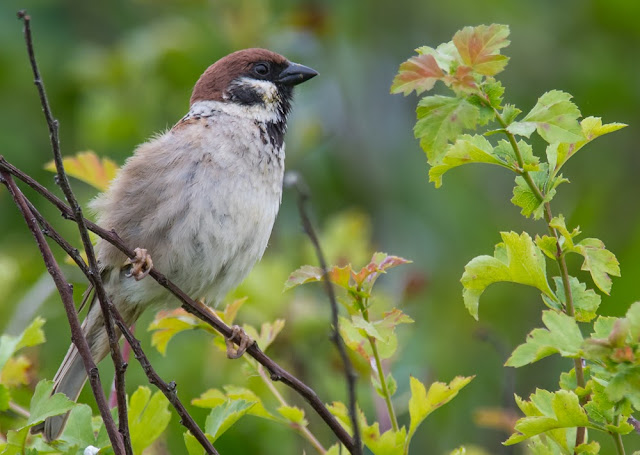Puffins spend most of the winter out at sea where they moult their colourful beaks. The young pufflings, which have already left by now, are abandoned by their parents to fend for themselves once they have fledged.
Much less evident than Puffins were the Fulmars as I only saw four or five of them all day. Fulmars fascinate me because of their tube noses which are used to drain saline water from a gland that extracts it from all the seawater they ingest whilst feeding out at sea. Sometimes the nose and beak can look quite grotesque and deformed whereas the one below is actually quite neat.
The Gannets never fail to please at Bempton and there were all shades of colour from completely dark brown to yellow heads with pure white bodies and chocolate-tipped wings. Gannets behave both comically and romantically with mutual head and bill rubbing being an essential part of their psyche. And those blue eyes are to die for!
Kittiwakes are probably the most numerous birds here and with their pure white rounded head shape and dark red eye they are a very soft and beautiful-looking creature. By now the gorgeous chicks have grown and some are starting to fly - today I was struck by just how stunning the youngsters' markings are particularly in flight. And they don't half make a racket - Kitty-wack, Kitty-wack, Kitty-wack!
Young Kittiwakes have gorgeous markings, especially when seen in flight. I just love that black bill!
A birder who I'd been chatting to earlier in the day kindly pointed out that there was a young Kestrel perched on the cliff face quite close to one of the platforms. It was constantly surveying the slope below and once in a while would drop down to it as if landing on prey. It never returned with anything whilst I was there however.
Another of Bempton's 'specialities' is the Rock Dove, the ancestor of our feral pigeons, although I'm told that the ones here are no longer a pure breed having interbred with feral racing pigeons over many years. Well I still count them as a tick!
I did manage to get a lifer towards the end of the day in the form of a Great Skua or Bonxie. The photographs are awful but good enough to confirm it as our largest Skua and a beast of a bird.
On the way back to the car and an angry wife (because I'd been two hours since she returned to read in the car instead of one) I met a solitary Tree Sparrow, many of which frequent the feeders and car park here. Not the best photo but, as with the Great Skua, I've included it for the sake of completeness. It was 5:15pm and the new Visitors' Centre was closed and shuttered so I never did get chance to look around to see how they'd improved things.
P.S. I may be adding some photos of Guillemots and possibly Razorbills if I can find any half decent photos of them. They weren't as evident today as they are earlier in the year and so I didn't have any really good photo ops.















No comments:
Post a Comment
Please leave a comment by typing your message in the text box, selecting 'Anonymous' from the 'Comment as' drop down menu and then finally clicking the 'Publish' button. It would be nice to see your name in the text if possible - thanks.